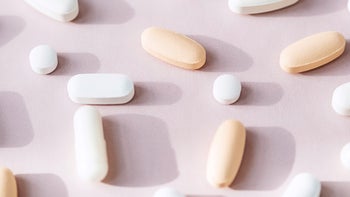
10 Foods That Are High in Vitamin D
Key takeaways:
Vitamin D is important for immune, bone, and heart health.
The two main sources of vitamin D are sunlight and food, but few foods have a lot of it.
Fatty fish, egg yolks, and liver naturally contain vitamin D. It’s also commonly added to foods such as cow’s milk, certain plant-based beverages, and breakfast cereals.
You can also get vitamin D through supplements or cod liver oil.
Vitamin D is an important nutrient for immune health and disease prevention. You can get enough vitamin D from eating foods with vitamin D and spending time in the sun. But vitamin D deficiency is common — 1 in 4 people in the U.S. have low vitamin D levels. Older adults and people with restrictive diets are even more likely to lack vitamin D.
This is partly because only a few foods naturally contain vitamin D. So if you want to increase how much vitamin D you get from your diet, check out our list of vitamin D foods that can help boost your levels.
Which foods are high in vitamin D?
Not many foods are naturally rich in vitamin D. But since vitamin D is such an important part of health, many food manufacturers in the U.S. add it during the production process. These are often labeled as “vitamin D fortified.” These fortified foods, though, may have only 10% to 15% of the recommended daily intake of vitamin D per serving.
Discover a simple way to manage diabetes
Patients can use GoodRx to save up to 40% on OneTouch Ultra Strips.

Here are 10 foods that are high in vitamin D (or commonly fortified with it):
Fatty fish, such as salmon, trout, and tuna
Beef liver
Egg yolks
Mushrooms
Cod liver oil
Cow’s milk and yogurt (fortified)
Plant-based beverages, such as almond, soy, or oat milk (fortified)
Orange juice (fortified)
Breakfast cereals (fortified)
Tofu (fortified)
You may be surprised to see mushrooms on the list. According to researchers, mushrooms may be among the only natural sources of vitamin D that are not animal products. But the amount they contain is affected by their exposure to sunlight, which can vary. While it may be hard to know for sure how much vitamin D is in your mushrooms, adding some mushrooms to your diet can help boost vitamin D along with many other nutrients.
How much vitamin D do these foods have?
Most experts recommend that people ages 1 to 70 get 600 international units (IU) of vitamin D each day. After age 70, this increases to 800 IU per day.
How much vitamin D is right for you depends on several factors, including your age and health conditions. Your primary care provider can help you figure out how much you need and if you’re getting enough.
To get a better idea of how much vitamin D you may be getting, here’s a chart with the vitamin D content of some common foods.
Food | Serving size | Vitamin D content (IU) |
Rainbow trout, cooked | 3 oz | 645 |
Salmon (sockeye), cooked | 3 oz | 570 |
White mushrooms exposed to sunlight | ½ cup | 366 |
Fortified cow’s milk | 1 cup | 120 |
Fortified plant-based beverage | 1 cup | 100-144 |
Eggs, cooked | 2 (large) | 88 |
Fortified tofu | 3 oz | 79-86 |
Beef liver | 3 oz | 42 |
Canned tuna | 3 oz | 40 |
Cheddar cheese | 3 oz | 34 |
Vitamin D is also in cod liver oil, but that’s more of a dietary supplement than a food. Each tablespoon of cod liver oil contains 1,360 IU of vitamin D. You can take it on its own or add it to juice or smoothies.
Are there any fruits or vegetables high in vitamin D?
Some forms of vitamin D can occur in plants, but not in significant amounts or ones that people commonly eat. Some research has looked at vitamin D in plant leaves of the Solanaceae family, which includes certain tomato plants. But they found only small amounts of vitamin D in UV-treated leaves — not the fruit. Scientists continue to look for fruits and vegetables high in vitamin D.
Mushrooms are really the only notable plant-based source of vitamin D. But keep in mind that most mushrooms you’ll find in the store, like button mushrooms, aren’t exposed to sunlight. So they don’t contain a significant amount of vitamin D.
Vitamin D deficiency: A lack of vitamin D can raise your risk of developing certain health conditions. Learn more about the risks and how to know if you’re getting enough.
Recommended amounts of vitamin D: How much vitamin D you need depends on a few different things. Here’s your guide to safe dosages.
Benefits of sunlight: Sunlight is the best way to get vitamin D. But vitamin D isn’t the only perk of the sun. Find out more about how sunlight benefits your health and well-being.
Who should get more vitamin D?
If you get outside in the sunlight on a regular basis and eat a balanced diet, you probably get enough vitamin D. But some people are at higher risk of vitamin D deficiency, including:
Babies who are breastfeeding: Breast milk doesn’t contain significant amounts of vitamin D, so babies who are exclusively breastfed can become deficient. But if a breastfeeding mother takes in 4,000 IU of vitamin D a day, the baby may be able to get enough vitamin D from breastfeeding alone.
Older adults: As you get older, your body can’t make as much vitamin D. And older adults tend to spend less time outside. Some evidence suggests that vitamin D supplementation is linked to a lower risk of falls among older adults.
People who don’t get a lot of sun exposure: This includes people who spend more time indoors, live in a cold climate or northern latitudes, or usually wear clothing that covers most of the body.
People who have darker skin tones: Melanin is a pigment in darker skin tones that lowers the body’s ability to turn the sun’s rays into vitamin D.
People who take certain medications: There are some medications, such as steroids and blood pressure medications, that can cause lower vitamin D levels because of the way they work in the body.
People with limited ability to absorb nutrients: This can include people with inflammatory bowel disease, celiac disease, or Crohn’s disease, as well as those who have gone through bariatric surgery.
If you’re worried about vitamin D deficiency, talk with your primary care provider. They can order a blood test to figure out your vitamin D level.
Normal vitamin D levels are between 30 ng/mL and 100 ng/mL. When vitamin D levels are below 20 ng/mL, it’s considered a deficiency.
How else can you raise your vitamin D levels naturally?
The most effective way to get vitamin D is from sunlight. When sunlight hits the skin, it causes the body to produce vitamin D. You can get as much as 90% of your vitamin D this way. And you don’t need to stay in the sun for too long — it can take as little as 20 minutes of sunlight a day.
But sun exposure does come with risks. And sunscreens and sunblocks, which are important for preventing skin cancer, may also prevent the body from using sunlight to make vitamin D. Because of this, the American Academy of Dermatology (AAD) advises against getting vitamin D from sun exposure or indoor tanning. Instead, the AAD recommends getting vitamin D from food and supplements.
When should you consider a vitamin D supplement?
You may need a vitamin D supplement if you don’t eat foods that contain vitamin D, if you have certain medical conditions, or if you have a known vitamin D deficiency. Your primary care provider may recommend supplements depending on your vitamin D levels. It will take a few weeks or a month for vitamin D levels to rise.
The bottom line
Vitamin D is essential to good health, but it’s not in many foods. Eating foods like fatty fish, eggs, and foods that have been fortified with vitamin D can help you raise your levels naturally. But, depending on factors such as your age, medications you take, and existing vitamin D levels, you may need a supplement. Your healthcare team can help you figure out if and how much extra vitamin D you need.
Why trust our experts?



References
American Academy of Dermatology Association. (2023). Vitamin D.
Black, L. J., et al. (2017). In pursuit of vitamin D in plants. Nutrients.
Cardwell, G., et al. (2018). A review of mushrooms as a potential source of dietary vitamin D. Nutrients.
Fulgoni, V. L., et al. (2021). Nutritional impact of adding a serving of mushrooms on usual intakes and nutrient adequacy using National Health and Nutrition Examination Survey 2011-2016 data. Food Science & Nutrition.
Han, Q., et al. (2022). Effects of vitamin D3 supplementation on serum 25(OH)D concentration and strength in athletes: A systematic review and meta-analysis of randomized controlled trials. Journal of the International Society of Sports Nutrition.
Jäpelt, R. B., et al. (2013). Vitamin D in plants: A review of occurrence, analysis, and biosynthesis. Frontiers in Plant Science.
Mendes, M. M., et al. (2018). Vitamin D status in the tropics: Is sunlight exposure the main determinant? Nutrition Bulletin.
National Institute of Child Health and Human Development. (2023). Vitamin D. Drugs and Lactation Database (LactMed).
Office of Dietary Supplements. (2022). Vitamin D - consumer.
Office of Dietary Supplements. (2023). Vitamin D - health professional.
USDA National Nutrient Database for Standard Reference. (2015). Vitamin D content. National Agricultural Library.
Wei, F. L., et al. (2022). Association between vitamin D supplementation and fall prevention. Frontiers in Endocrinology.














